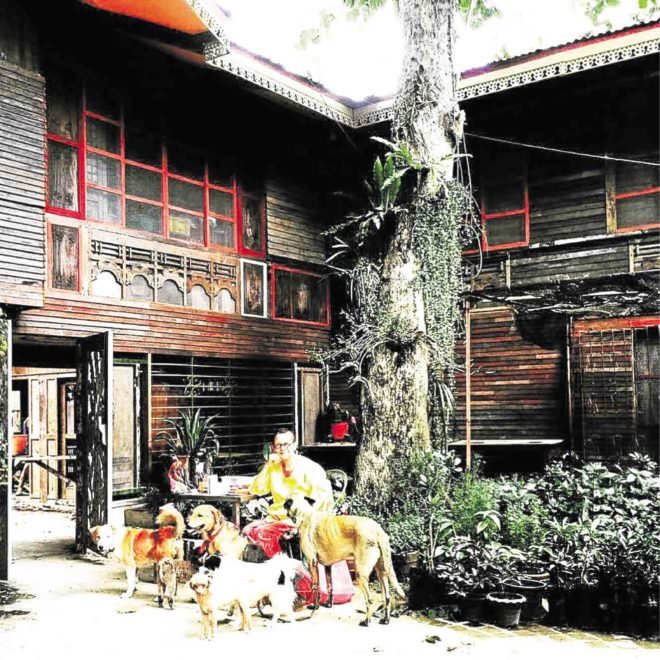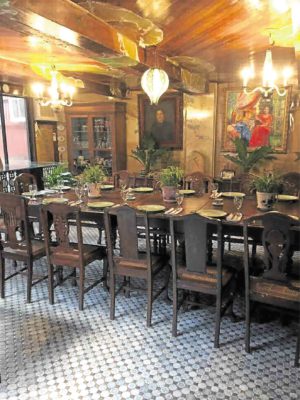
Why is culture important in this day and age? When the world, as some say, is becoming more flat, when social media platforms make instant communication possible, when cities all over the globe resemble each other more and more, of what significance is it that the Philippines should project itself as having a distinct identity and culture—in other words, possess a brand that is as easily identifiable as the Japanese, the Brazilian or the Egyptian?
This is the question that cultural diplomacy poses, and which is the challenge given to Filipino diplomats in the 21st century.
Where a country’s image may be unclear or tarnished by negative publicity, it may still underline its positive traits through its basic cultural identity which endures no matter what.
One of the youngest countries in the world, South Africa, emerged from a turbulent past with a big task of creating a new post-apartheid brand. Its icons were few but powerful—Nelson Mandela and Desmond Tutu; beautiful sites like Cape Town and Kruger National Park; Johannesburg and Soweto.
Yet, within a few years, South Africa’s rainbow flag and a catchy phrase had imbedded itself in the international consciousness—“South Africa: It’s Possible.”
This is yet another example of how cultural diplomacy has leveraged a country, so that today, with a clear image of where and what South Africa is, it is able to easily sell its products to other countries. A South African song by Miriam Makeba could pave the way for the effectiveness of a business delegation. A recognizable brand is soft power at its best.

Mexico has branded itself as the land of artists Frida Kahlo and Diego Rivera, of Aztec pyramids and churrigueresco churches, of mariachi music and spicy cuisine.
Chile prides itself on Nobel laureates Pablo Neruda and Gabriela Mistral, but also points to its copper mines, its strong middle class and its attenuated shape and diverse geography as part of its identity as an emerging economic power.
Even Myanmar, after a long slumber, is learning to make use of its artistic treasures to attract tourists and businessmen to a more open country.
Brocka to Pitoy
That there is a direct connection between a successful cultural brand and triumph in the economic and political fields is a fact that other nations have long recognized.
It is no accident that the Alliance Francaise, Goethe Institute, Instituto Cervantes, the Dante Alighieri Society and the Thomas Jefferson Library are important tools in the diplomatic representation of their respective countries in the world.
Where no cultural centers yet exist, restaurants and cuisine or cultural troupes represent the country on a popular level, as the Thais.
The Philippines has not been completely unaware of this strategy and, in fact, pioneered in the cultural sphere internationally, with the Bayanihan as a national dance troupe, artists like Freddie Aguilar in music, Lino Brocka (and recently Brillante Mendoza and Lav Diaz) in cinema, Pitoy Moreno and Ramon Valera in fashion.
However, this effort was not sustained and supported on a national level and remains unfinished. There is a clear need to refurbish the national image and to make use of more contemporary icons to project the Philippines.
Crossroads
The 21st century poses particular challenges for the Philippines in establishing its brand for a culture that has been described as “authentic but not exotic” since its Western elements deceive many to believe that it has no “original” culture.
The French government, however, debunked this observation by helping mount a significant exhibit on the Philippines from April to July 2013 at the Quai Branly Museum in Paris, highlighting the country as a “crossroads of civilization.”
In 1998, during the celebration of the Centennial of the Philippine Revolution, France similarly paid homage to the Philippines by sponsoring an exhibit on the fashion of Patis Tesoro.
This was accompanied by the publication of a book on her designs that remains one of the best summaries of her work to date.
Other French institutes such as the Clermont-Ferrand museum near Lyon (a center for silk and textiles in the past) invited Tesoro in 2012 to lecture on Philippine natural fibers and her own work.
Her rustic Filipino house in Barrio Putol, San Pablo, Laguna, has been featured as an example of how nature and architecture intersect in the Philippine setting.
It’s no exaggeration to say that Patis Tesoro is a national asset who can be tapped to represent a distinct Philippine brand on the international arena.
Four decades have passed in which Tesoro has evolved to become a brand and a household name in the Philippines. She is primarily associated with the revival of the Philippine terno and native dress and fabrics such as piña, and also in her research on other native fabrics, dyes and fashion techniques and styles.
Her research work with author Dr. Lourdes Reyes-Montinola, who wrote a seminal book on piña, helped revive this moribund industry, which is again flourishing on the island of Panay.
Tesoro has been recognized via the Ten Outstanding Women in Nation’s Service award.
The sources of her strength and her reputation may be defined through the following:
First, she blends two traditions: on the one hand, the dedication to high standards in couture set by her mother, Esperanza Fabella-Pamintuan; and on the other, the projection of Philippine crafts to the public, as was done by her mother-in-law, Salud Ponce-Tesoro, in the popular handicrafts store Tesoro’s.
Second, she participates in a worldwide trend of continuing craft skills in the face of mass production by the machine.
History, it is said, does not repeat itself but rhymes. In the same way that the Arts and Crafts Movement in England and the Art Nouveau style in France came about as a reaction to the massive 19th-century industrialization in Europe with their renewed emphasis on nature, organic form, a return to craft and the handmade, unique object, Tesoro now belongs to a new wave with its return to craft and bespoke handiwork.
‘Bohemian Filipino’
Third, she has chosen to reinterpret native crafts for modern purposes.
In what she describes as “Bohemian Filipino,” she has introduced a line of the Filipino kimona dress (the sheer blouse which is usually twinned with a patterned, brightly colored skirt) that has appealed both to the Vietnamese and the French.
The colors are also more contemporary and the blouse remains typically Filipino, with transparency and flirtatious, eye-catching accents.
Tesoro combines elements of Filipino culture in unique, creative ways, such as Spanish or Muslim embroidery with T’boli cloth or square geometric patterns.
She looks to the past with her “Ninay” dolls (revival of native costumes and dress in a historic series), and to the future, with her current project to establish a Textile Museum in the old Pamintuan mansion in Angeles, Pampanga.
But her eye is ever focused on the present as well, and she is always keen to “cool spot” in her contact with young people and artists.
For this reason, Tesoro continues to experiment and to explore possibilities of expanding her field of Filipino culture. She refuses to be boxed in traditional categories, and this has led to her innovation in designing intricate patterns on paper fans, learning shoe design from Marikina manufacturers, and mentoring young artists in portraiture and in painting Filipino murals.
She is surely one of the specialists in burda and calado, with which she has adorned the Patis Tito restaurant in San Pablo.
Fourth, she forms part of a New Wave of Filipino designers who have made names for themselves internationally, under their own brands.
These include Josie Natori, Bea Valdes, Monique Lhuillier, and Tina Ocampo; and in home design, Budji Layug, Kenneth Cobonpue and Ana Pamintuan.
The work of Tesoro and those of her peers make it easier to engage in cultural diplomacy. Practitioners of this task do not have to look far and wide for models on which the Philippine template for the 21st century brand will be crafted. Tesoro is clearly one of its leading lights.
In 2016, Tesoro was given a special award by Ateneo de Manila University for cultural revival. Her late husband, lawyer José Claro “Tito” Tesoro, was an outstanding graduate and professor of the same school.
Survival
Rather than give in to the dark sorrows and woes of widowhood or dwelling on the earlier deaths of Tito and their son, Joel, she has characteristically chosen to use her own strong resources of survival and creativity by relocating to her country home in Barrio Putol, San Pablo City (a long established plan and dream) and reviving on a call basis the Patis Tito Café, which features Filipino comfort food with a twist.
The shop and house in San Juan no longer exist, but its important sections, like the dining and living room, have been transplanted in San Pablo, where they form part of a new bed-and-breakfast that is stunning in its use of Machuca tile and bahay na bato elements. Here may be another classic in the making.
Not overtly religious, Tesoro nevertheless says that her beloved Tito sent her a sign from the other world, not in the hackneyed way of a black butterfly, but of a sudden thud on her Putol house roof and a brilliant light that flooded her bathroom during a very private moment.
Tuesdays and Thursdays, she makes herself available to clients at Tesoro’s Makati on Arnaiz Avenue.
She is still as busy and as voluble as ever, and it is probably with a sigh of relief that friends and admirers who now crowd her agenda in Manila recount that an internationally recognized Philippine brand is still accessible in the Metro Manila area.

